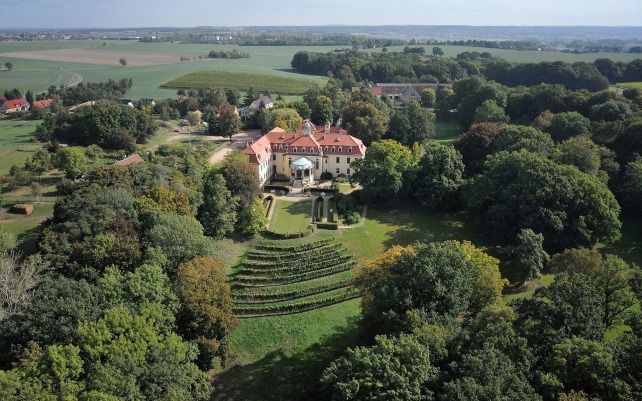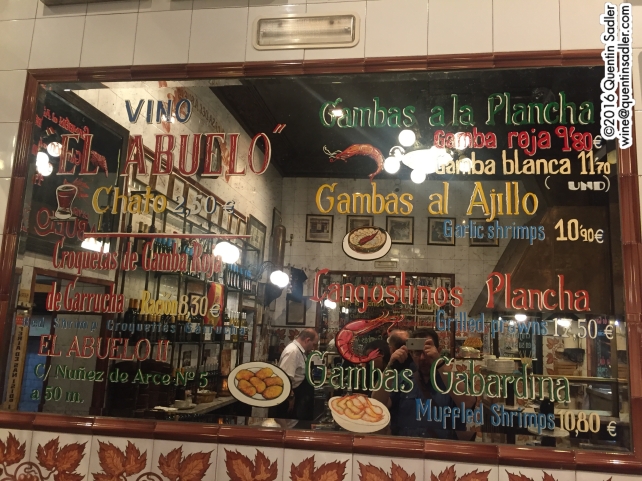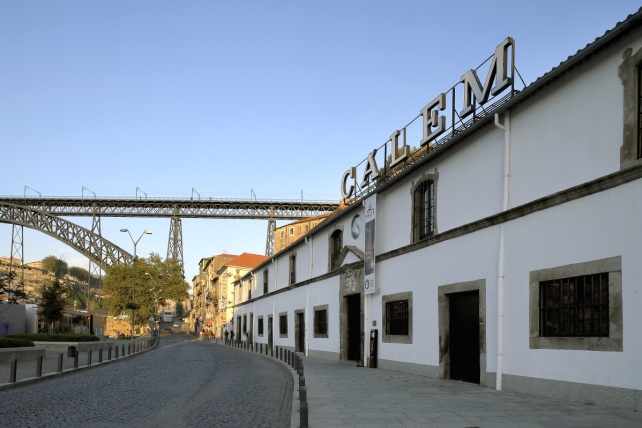German wines just do not get the respect they deserve. Germany is an exciting, stimulating wine producing country, yet so many people – in the UK anyway – have a very limited view of what German wines are all about. The folk memory of cheap German wines of the 19760s and ’70s lingers on in the UK to everyone’s detriment. You can still buy those sweetish wines like Liebfraumilch, but you have to look for them. Leave them to your memories though and try some of the more interesting and exciting German wines that are now being made.
A few months ago I had an amazing trip to Germany, to some of the lesser known regions – lesser known from a UK perspective anyway – Württemberg, Franken and Baden. I loved it so much and was so impressed that I recently put on a tasting of some fantastic German wines that I discovered on that trip and at some subsequent tastings.
 Many of these producers are member of The Verband Deutscher Prädikatsweingüter (the Association of German Prädikat Wine Estates, abbreviated VDP). This a voluntary grouping of some quality conscious producers nationwide who have grouped together to apply higher winemaking standards than the national regulations require.
Many of these producers are member of The Verband Deutscher Prädikatsweingüter (the Association of German Prädikat Wine Estates, abbreviated VDP). This a voluntary grouping of some quality conscious producers nationwide who have grouped together to apply higher winemaking standards than the national regulations require.
There are 4 quality levels in the VDP classification, in descending order:
VDP Grosse Lage is roughly the equivalent of Grand Cru and come from sites carefully selected and classified by the VDP. Yields must be very low, harvesting must be by hand and the grapes must be at least ripe enough ripe enough to qualify for Spätlese level. A dry wine from a Grosse Lage site must be labelled as Grosses Gewächs and bottled in a special bottled marked with GG. Dry examples must be labelled as Qualitätswein Trocken. Off dry versions can be labelled as halbtrocken or feinherb, but these terms do not have to be on the label. The label must bear the name of the village and the vineyard site, like the Würzburger Stein Silvaner Trocken below.
VDP Erste Lage means first class vineyards and are supposed to have a distinctive character, much like Premier Cru vineyards in France. Yields have to be low and the grapes must be harvested by hand and must be at least ripe enough to qualify for Spätlese level. Dry examples must be labelled as Qualitätswein Trocken. Off dry versions can be labelled as halbtrocken or feinherb, but these terms do not have to be on the label. The label must bear the name of the village and the vineyard site, like the Würzburger Stein Silvaner Trocken below. Sweet versions are labelled with one of the traditional Prädikats (Kabinett, Spätlese, Auslese, Beerenauslese, Eiswein or Trockenbeerenauslese), provided they qualify for that specific Prädikat.
VDP Ortswein is like a village wine – like AC St Emilion or Meursault – dry examples must be labelled as Qualitätswein Trocken, trocken means dry. Ortswein does not have to appear on the label. Sweeter versions can be made with the specific Prädikat appearing on the label, if they qualify
VDP Gutswein is like a regional wine – like AC Bordeaux or Bourgogne – they can have the specific Prädikat on the label, if they qualify and Gutswein does not have to appear on the label.
The Wines and the Regions
Württemberg is a wonderful wine region, ridiculously beautiful and full of stunning traditional towns and vineyard sites that take your breathe away. Many of these are either on slopes by the rivers, especially the Neckar, or on a scattering of south facing hillsides to the north and east of Stuttgart. Because of the excellent exposure it is the premier red wine region in Germany growing Lemberger, or Blaufränkisch, Trollinger, Spätburgunder, Dornfelder and Portugieser among others.
 2015 Flein Weisser Riesling Theresa Trocken
2015 Flein Weisser Riesling Theresa Trocken
Weingut Weingut Kistenmacher & Hengerer
Deutscher Qualitätswein Trocken / VDP Ortswein
Heilbronn
Württemberg – number 1 on the map
Like many of the producers I showed, the Hengerer family have been growing grapes and making wine since the fifteenth century. The estate, weingut in German, is run by a very talented winemaker called Hans Hengerer and he is really good. They are based in Heilbronn Again like many of these producers he has a small estate, just 12 hectares, but he makes terrific wines form it, using old vines and wild yeast fermentations.
This is very unlike my normal view of German Riesling, it is properly dry and the wild yeast and malolactic fermentation and lees ageing give it a fat, textured style that is backed up by, rather than dominated by, Riesling’s hallmark acidity. Lovely length and finesse, this is a beautiful wine – 93/100 points.
 2015 Heilbronn am Neckar Gelber Muskateller Trocken
2015 Heilbronn am Neckar Gelber Muskateller Trocken
Weingut Weingut Kistenmacher & Hengerer
Deutscher Qualitätswein Trocken / VDP Ortswein
Heilbronn
Württemberg – number 1 on the map
This wine really made me sit up and take notice. Hans Hengerer has done something amazing here, he has made a dry Muscat that I really love. I think what sets it apart if that it is made from the Yellow Muscat rather than the more famous White Muscat, or Muscat Ottonel, and it has loads of character.
The aromas are simply stunning, lifted and peachy with some wonderful peach blossom and roses fragrance too. The palate carries on the delights with a touch of rich, peachy acidity, loads of ripe fruit and some lightly creamy texture from the lees ageing. A very unusual style for me and I totally fell for its charms and think it would make a superb aperitif or partner to fine Asian cuisine – 92/100 points.
Franken is another scattered wine region that consists of steep hillsides bordering the Main River. The summers are short and autumns are pretty cool, so early ripening grapes are the most suitable, which is why Riesling is not widely grown, instead the signature grape is Silvaner. Many wines are bottled in the traditional flask shaped Bocksbeutel, which has been used in the region ever since glass bottles became normal in the 17th century onwards.
 2014 Würzburger Stein Silvaner Trocken
2014 Würzburger Stein Silvaner Trocken
Weingut Bürgerspital
Qualitätswein
VDP Erste Lage
Würzburg
Franken – number 2 on the map
The Weingut Bürgerspital was originally created in 1321 to fund an old people’s nursing home, Bürgerspital, at the gates of the beautiful town of Würzburg, which has an amazing castle nestled amongst the vine covered slopes above it.
In the past I never thought much of Silvaner, especially from Alsace, but having now tasted quite a few examples from Franken, I am much more excited by the grape than I ever thought possible. This example comes from one of the most famous vineyards in the region, Stein, which is a steeply sloped site with poor, stony soils. The wine it makes is taut, bone dry and mineral in a very Chablis-like way. The wine aged for several months on the lees in big old wooden barrels and the extra complexity shows. I loved this wine, it was a splendid aperitif and the left overs were fabulous with fish and chips the next day – 93/100 points.
 2014 Grauer Burgunder Trocken
2014 Grauer Burgunder Trocken
Weingut Wittman
VDP Gutsein / Qualitätswein
Westhofen
Rheinhessen – number 3 on the map
This wine isn’t really from an unusual place, but I enjoyed its style very much, so I stuck it in the tasting. Grauer Burgunder is another grape variety more commonly associated with Alsace, as it is Pinot Gris. The Germans can also call it Rülander, although if that is on the label it is often a tad sweet, and Pinot Grigio has become widely seen on the cheaper, lighter versions.
Weingut Wittman is another venerable estate, having been making wine in the beautiful old market town of Westhofen in southern Rheinhessen since 1663. Today Philipp Wittman organically and biodynamically farms 28 hectares – 69 acres – of fertile soil and grows mainly Riesling, but good as his Rieslings are, this wine really drew me. He carries out slow fermentations and uses wild yeast, so his wines have a lot of texture and that and the aromatics is where this wine really wins.
The nose was leesy and creamy with some smoke and rich orchard fruit too, especially spiced pear. The palate was textured, creamy again, but there was good acid balance for a Pinot Gris. It was quite rich and powerful and definitely made a statement, I loved it – 90/100 points.
Sachsen is a wine region around near Meißen and just to the north west of Dresden. We are quite a long way north here and so most of the vineyards are planted on very steep slopes along the Elbe River in order to get enough sunshine to ripen the grapes – the Czech border is not far away either, so it is easy to forget that this is wine country.
 2008 Scheurebe Kabinett Trocken
2008 Scheurebe Kabinett Trocken
Schloss Proschwitz
Prädikatswein / VDP Ortswein
Sachsen – number 4 on the map
I love this wine and if you are interested you can click here to read a piece I wrote in 2009 about how I became aware of it. Scheurebe is a terrific grape that was created by Dr. Georg Scheu in 1916. He thought he was crossing Riesling with Silvaner, to produce a superior Silvaner, but it now seems that he made a mistake and actually crossed Riesling with an unknown wild vine that has been lost to science. Until 1945 the grape was known by the serial number that Scheu had given it, Sämling 88, or Seedling 88, and it is still called Sämling or Sämling 88 in Austria. In 1945 it was named Scheurebe in Scheu’s honour.
Schloss Proschwitz is in the old DDR, eastern Germany, and is owned by Georg Prinz zur Lippe, whose family had their lands confiscated by the occupying Soviet forces in 1945. After Reunification Georg was able to slowly buy back his family’s wine estates and is today a beacon for wine quality in this sadly overlooked wine region.
The nose was fragrant, with citrus and peach blossom, with some ripe nectarine and some honeyed, waxy development notes. The palate was slightly rounded and textured – malolactic and lees perhaps – with some lovely orchard fruit, dashes of honey and white pepper. As well as that softness, there is an underlying core of acidity and minerality keeping the whole thing refreshing and fine – 92/100 points.
 2012 Lemberger Hades
2012 Lemberger Hades
Weingut Sonnenhof
Qualitätswein
Vaihingen an der Enz
Württemberg – number 5 on the map
I saw so many stunning vineyards in Württemberg that it was easy to become quite blasé about the beauty all around me, but sitting tasting wines in the vineyards at Weingut Sonnenhof was quite an experience and explained why the site is called Sonnenhof, or sun yard – even halo in some translations. It is a wondrously sunny spot on a south facing ridge halfway between Stuttgart and Heilbronn and completely lived up to its name. Interestingly the whites from the estate were really pretty rich because of all the sun and heat and it was the reds that really appealed to me here, although their barrique aged Chardonnay was pretty good.
Lemberger, or Blaufränkisch which means Blue Wine of Franconia, is the central European black grape par excellence and it’s found all over Germany, Austria, Hungary, where it is called Kékfrankos, and Slovenia, where it is often called Modra Frankinja, as well as Slovakia – it is also an important grape in upstate New York, where it is also known as Lemberger. There is actually a small town called Lemberg – Lemberg pri Šmarju – in Slovenia’s Lower Styria region and some sources say it was from there that the grape was exported to Germany in the nineteenth century and hence the reason for the Lemberg name there and in the USA – although of course the area was part of Austria at that time.
This wine is called Hades because it comes from the warmest, sunniest blocks on the estate. It is a careful selection of the best fruit and is aged for 20 months in oak barrels. The colour is amazing, dense and opaque with a deep black cherry colour. Black cherry, blackberry, plums, spice and a little tobacco and mocha dominate the nose, while the palate is rounded, smooth and seductive. There are mouth filling, concentrated dark fruit characters, together with some of the acidity of dark cherries and stewed plums, while the oak gives the complexity of cigars, mocha, fine milk chocolate and graphite. There is some nice freshness and appealing fine grain tannins on the long finish. I was very impressed by this wine and enjoyed it immensely – 92/100 points.
Baden is a very hard wine region to pin down, because it is so spread out, but the next two wines come from the Tauberfranken, which is in the north east of the region where Baden and Württemberg meet.
 2014 Schwarzriesling
2014 Schwarzriesling
Weingut Schlör
Qualitätswein / VDP Ortswein
Tauberfranken
Wertheim-Reicholzheim
Baden – number 6 on the map
The Schlör family have been making wine for well over 300 years, but Weingut Schlör was created in 1984 by a charming couple called Konrad and Monika Schlör, and as far as I can see they do everything. This wine is made from Schwarzriesling, which is the local name for Pinot Meunier, which is a common grape in these parts, although few that I tried had the depth of the examples made by Schlör.
The grapes were handpicked and carefully selected, cold fermented and then matured in French oak casks for 8 months. The wine is a lovely Pinot colour, with a fragrance and perfume that is very enticing, there is a leafy, lightly spicy quality and savoury scented red fruit. The palate is medium bodied and has that spicy, earthy quality and lovely ripe red fruit, smooth tannins and that spice character. I loved this wine and would serve it lightly chilled I think – 92/100 points.
 2014 Schwarzriesling R
2014 Schwarzriesling R
Weingut Schlör
VDP Erste Lage Reicholzheimer First
Reicholzheimer
Tauberfranken
Baden – number 6 on the map
This is a single vineyard wine from Reicholzheimer, Reicholzheimer First which is very near Wertheim on an S shaped bend in the Tauber River. The steep vineyard faces south west, so gets perfect exposure. The site is an Erste Lange, Weingut Schlör is the only VDP member in the Tauber Valley and this is the only rated vineyard. Interestingly the First vineyard appears on maps from 1476 onwards – it was then spelt Fyerst – and was next to the Bronnbach Monastery, which was founded by Cistercians monks from Burgundy, who by creating monasteries across Europe, did much to spread skilful viticulture too.
The fruit was handpicked and only the wild yeast was used for the fermentation, which gives a longer, slower fermentation. After a cold fermentation, the wine was aged in French oak barrels for 18 months.
This wine is more complex and concentrated, with a richly smoky nose. On the palate the tannins are velvety and the spicy, smoky oak and rich dark red fruit are really well integrated. I think this wine needs time to show its best, but it was tremendous right now too – 93/100 points.
 2013 Pinot Noir GG Untertürkheimer Herzogenberg
2013 Pinot Noir GG Untertürkheimer Herzogenberg
Weingut Wöhrwag
Stuttgart-Untertürkheimer
Württemberg – number 7 on the map
Weingut Wöhrwag was one of my favourite visits on my trip, they were lovely people and all the wines were magnificent – I loved his Rieslings. The winery and the Untertürkheimer Herzogenberg vineyard are in a suburb of Stuttgart just to the the north east of the city – there is an U Bahn station just a short stroll away from the vines. The vineyard itself is a magnificent site, a steep hill whose south and south west facing slopes overlook the Neckar River.
I had never heard of Wöhrwag before, which is hardly surprising as they have a strong local following. 50% of their production is sold at the winery and the rest within 60 kilometres – mainly in Stuttgart. Hans-Peter Wöhrwag and his wife Christin farm the 20 hectares of the Untertürkheimer Herzogenberg – it is a monopoly – vineyard using sustainable viticulture. They do not irrigate as they want the vines to dig deep into the ground for water and complexity. For Hans-Peter everything is decided in the vineyard as the quality of the wine is all about the quality of the grapes.
So you see, Germany has a lot more to offer than many people think. Great wines, wonderful variety and stunning scenery – I feel another trip coming on.
Really though, if you have never tried a fine, dry German wine, there has never been a better time to give it a go as a German wine revolution is in full swing and the wines have never looked better. You probably won’t find these exact wines – unless you go to Germany – but a little time spent on Google will find you wine merchants with good German lists, or you could always start at The Wine Barn, which is a German specialist merchant and wine club.
More information is available from Wines of Germany (UK) and Wines of Germany (USA).





































